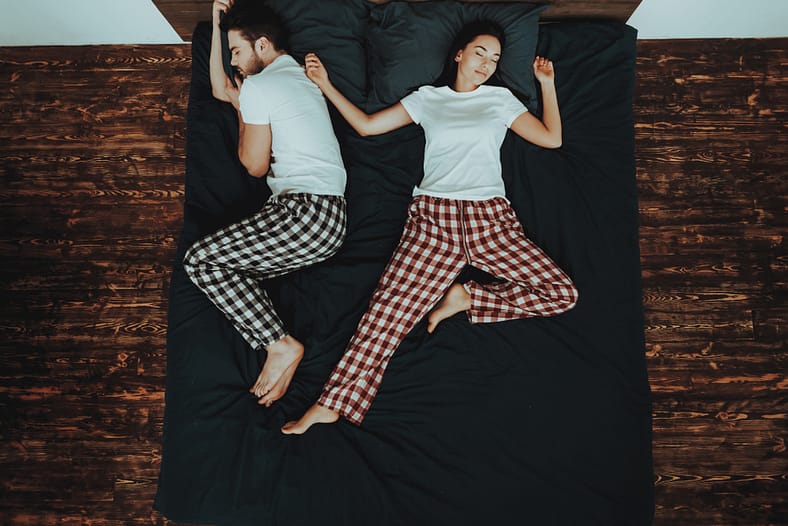

For young, healthy people, sleep position is less important. But as you get older and have more medical issues, sleep position can become positive or negative. Whether you’re a side sleeper or more of the sprawled-on-your-belly type, here’s what your go-to snooze position does for your health—and how to capitalize on better sleep so you wake feeling fully rested.
>>Position 1: The Back
Congratulations! This position offers the most benefits for super sleep because your head faces straight up—so gravity pulls down on your face and chest, which means bye-bye wrinkles and reflux—and weight is distributed evenly on the spine. The only issue with back-sleeping concerns habitual snorers: It’s harder to breathe when the throat is being pulled down by gravity, so those folks are probably better off rolling onto their side.
>>Position 2: The Side
Did you know you’ll benefit differently from curling up on your left side than your right? Experts say sleeping on your left side helps your heart pump blood more easily throughout the body—because you’re putting less pressure on that area—whereas sleeping on your right side constricts the ribs and makes the lungs work harder. If you’re generally pretty healthy, you may not need to worry about which side you favor, but for those who suffer from heartburn or reflux, or who are pregnant, sticking with left-side sleep is your safest bet. Maximize your rest by placing a pillow between your knees to align the spine, hips, and joints; you can also put a small rolled up towel in the natural curve of your waist to take pressure off your organs and support proper alignment.
>>Position 3: Sprawled With One Leg Up
Sleeping like you’re trying to hug your bed—with one leg bent so the knee sticks out and the shin crosses over the other (straight) leg—isn’t benefitting you much in the way of healthful sleep. This is mainly attributed to a displacement of pressure, which may cause back problems in the future. However, putting both legs up while sleeping would pull pressure off of the pelvis—which could alleviate some of that low-back pain. For now, your best bet is to put a pillow between your legs to stop your one leg from creeping up toward your chest, as well as to take weight off the pelvis.
>>Position 4: Stomach
While this isn’t the best position for restful sleep, there’s still hope for all you stomach sleepers. Try switching to a thinner, firmer pillow so you avoid propping your neck up too high; you can also place a thick pillow under your pelvis to decrease the arch of the lower back. These strategies will help naturally align your spine. If you find that you still wake with pain, though, you may want to consider swapping your stomach sleeping habits for a side or back position.
10 p.m. – Your best bedtime, if you regularly rise at 7 a.m.; this is when melatonin levels are optimal for sleep.
Don’t underestimate the importance of optimizing your bedroom to help you get a good night’s sleep.
- Clean sheets: Wash sheets frequently and vacuum the mattress to rid it of dust and dander that can cause allergies and impair your sleep.
- Close the blinds: Use curtains or blinds to keep the room dim at night. But open the curtains (or head outside) in the morning to reset your internal clock.
- Location matters: Position your bed so you aren’t facing distractions such as a desk stacked with work or a blinking light.
The sleep environment is something that can easily be fixed. By giving a little thought to positioning your body and bed, you might find your slumber is even sweeter.


